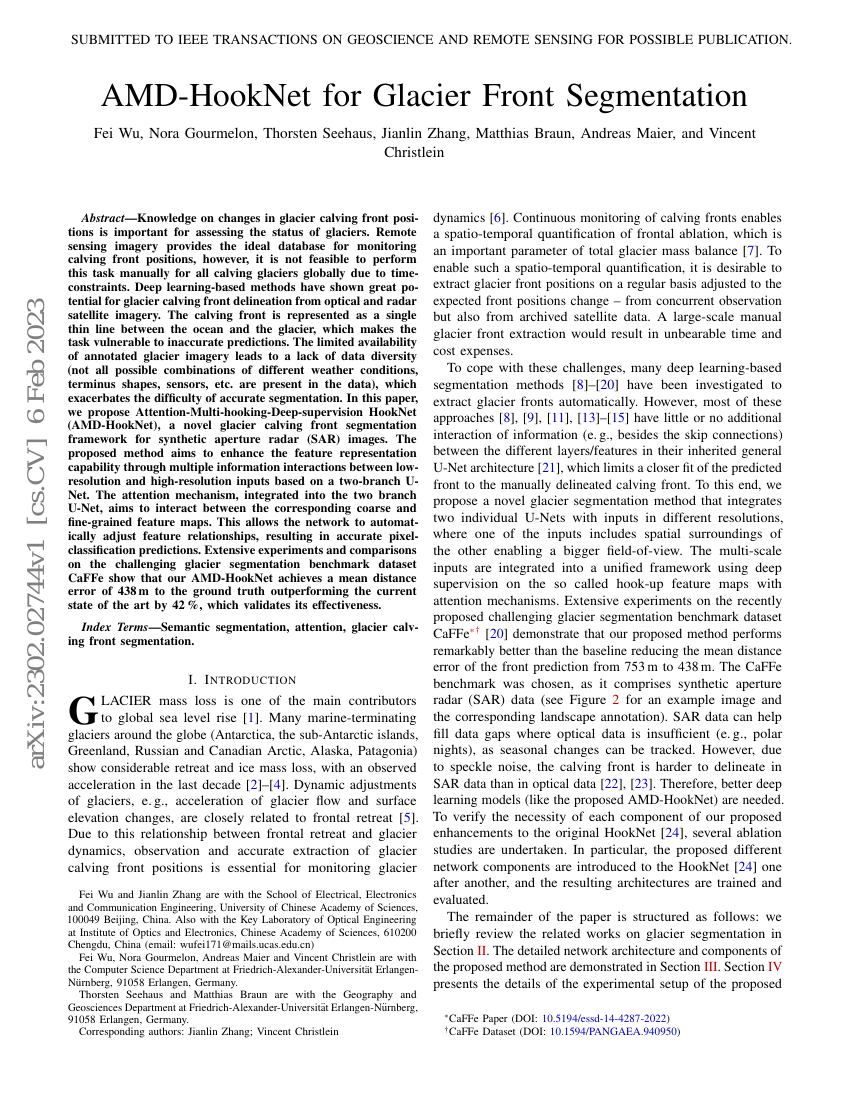AMD-HookNet for Glacier Front Segmentation

Knowledge on changes in glacier calving front positions is important forassessing the status of glaciers. Remote sensing imagery provides the idealdatabase for monitoring calving front positions, however, it is not feasible toperform this task manually for all calving glaciers globally due totime-constraints. Deep learning-based methods have shown great potential forglacier calving front delineation from optical and radar satellite imagery. Thecalving front is represented as a single thin line between the ocean and theglacier, which makes the task vulnerable to inaccurate predictions. The limitedavailability of annotated glacier imagery leads to a lack of data diversity(not all possible combinations of different weather conditions, terminusshapes, sensors, etc. are present in the data), which exacerbates thedifficulty of accurate segmentation. In this paper, we proposeAttention-Multi-hooking-Deep-supervision HookNet (AMD-HookNet), a novel glaciercalving front segmentation framework for synthetic aperture radar (SAR) images.The proposed method aims to enhance the feature representation capabilitythrough multiple information interactions between low-resolution andhigh-resolution inputs based on a two-branch U-Net. The attention mechanism,integrated into the two branch U-Net, aims to interact between thecorresponding coarse and fine-grained feature maps. This allows the network toautomatically adjust feature relationships, resulting in accuratepixel-classification predictions. Extensive experiments and comparisons on thechallenging glacier segmentation benchmark dataset CaFFe show that ourAMD-HookNet achieves a mean distance error of 438 m to the ground truthoutperforming the current state of the art by 42%, which validates itseffectiveness.